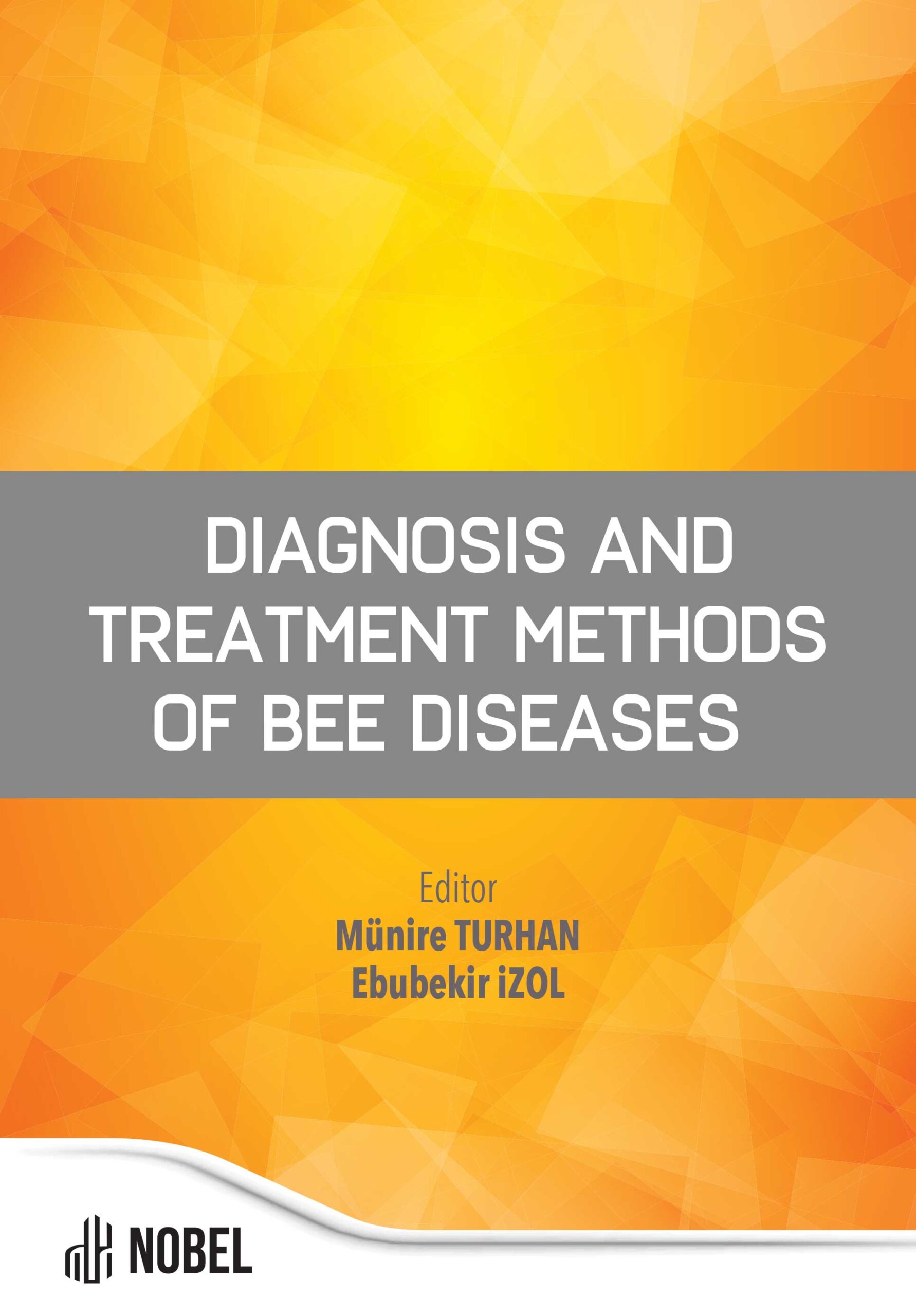Diagnosis of Bee Diseases in Adult Honey Bees and Brood According to Clinical Findings
Metin Gurcay (Author)
Release Date: 2024-05-28
There are bacterial, viral, fungal and parasitic diseases that affect bee health in honey bee farming. These diseases directly affect the health of the honey bee and therefore the health of the colony. These diseases affect the development periods of the bees after the egg stage in the honeycombs, affect the performance and production capacity [...]
Media Type
PDF
Buy from
Price may vary by retailers
| Work Type | Book Chapter |
|---|---|
| Published in | Diagnosis and Treatment Methods of Bee Diseases |
| First Page | 103 |
| Last Page | 118 |
| DOI | https://doi.org/10.69860/nobel.9786053359159.8 |
| ISBN | 978-605-335-915-9 (PDF) |
| Language | ENG |
| Page Count | 16 |
| Copyright Holder | Nobel Tıp Kitabevleri |
| License | https://nobelpub.com/publish-with-us/copyright-and-licensing |
Metin Gurcay (Author)
Associate Professor, Bingöl University
https://orcid.org/0000-0001-9160-7454
3I was born in Elazığ on 03.11.1964. After completing my primary, secondary and high school education, I entered F.Ü. Faculty of Veterinary Medicine in 1982. I graduated from the faculty in 1987. I did my military service in 1988-1989. After returning from military service, I worked as a freelance veterinarian for a short time. In June 1990, I was appointed as a Veterinarian at Elazığ Veterinary Control Institute. In the fall semester of the same year, I studied at F.Ü. I started my PhD program in the Department of Virology at the Institute of Health Sciences. I completed my PhD in June 1995. I got 70 points in the Interuniversity Board Center Foreign Language Exam in November 1996. In the same year, I received Veterinary Epidemiology training for 3 months at Colorado State University Veterinary Faculty. Upon my return, I started working as the laboratory manager of the Virology Laboratory within the Elazığ Veterinary Control Institute. I worked in this position for a long time. On 12.09.2015, I started working at the Virology Department of Bingöl University Faculty of Veterinary Medicine. I left this position. On 13.09.2015, at Bingöl University, Faculty of Veterinary Medicine, Department of Virology, Dr. I started working as a faculty member. I was appointed as the head of the Department of Virology on 05.11.2015. With the evaluation of my March 2019 Associate Professorship application file, I received the title of Associate Professor in April 2020. I was appointed to the Associate Professor position in May 2021. I serve as the head of the Department of Virology at the Faculty of Veterinary Medicine. I have been serving as the Associate Professor representative in the Faculty Board of our Faculty since 29.04 2020. I started my duty on the board of directors of our faculty on 30.04.2020. I am still carrying out these duties.
Genç, F., & Dodoloğlu, A. (2011). Arıcılığın Temel Esasları. Ders kitabı, Atatürk Üniversitesi Ziraat Fakültesi Yayınları, Yayın No: 341, Erzurum.
Francis, R. M. (2012). Viral diseases in honey bee queens. Aarhus Universitet, Institut for Agroøkologi.
Akyol, E. (2007). Bal arılarında yumurtanın yapısı ve embriyo gelişimi. Uludağ Arıcılık Dergisi, 7(4), 135-144.
https://agriculture.vic.gov.au/biosecurity/animal-diseases/honey-bee-pests-and-diseases/field-diagnosis-of-honey-bee-brood-diseases
Ritter, W., & Akratanakul, P. (2011). Honey bee diseases and pests: a practical guide. Agricultural and Food Engineering Technical Report (FAO) eng no. 4.
Van Metre, D. C. (2017). Pathogenesis and treatment of bovine foot rot. Veterinary Clinics: Food Animal Practice, 33(2), 183-194.
https://www.ariciyim.com/arilarda-avrupa-yavru-curuklugu-hastaligi-ve-tedavisi
Aronstein, K. A., & Murray, K. D. (2010). Chalkbrood disease in honey bees. Journal of invertebrate pathology, 103, S20-S29.
https://beeinformed.org/2020/11/09/chalkbrood-disease-primer/
https://www.bensbees.com.au/chalkbrood/
Gong, H. R., Chen, X. X., Chen, Y. P., Hu, F. L., Zhang, J. L., Lin, Z. G., ... & Zheng, H. Q. (2016). Evidence of Apis cerana Sacbrood virus Infection in Apis mellifera. Applied and environmental microbiology, 82(8), 2256-2262.
https://beeinformed.org/wp-content/uploads/2011/07/SBV-3.jpg
https://pbka.info/2014/05/01/bee-health-monthly-sacbrood/
Higes, M., Esperón, F., & Sánchez-Vizcaíno, J. M. (2007). First report of black queen-cell virus detection in honey bees (Apis mellifera) in Spain. Spanish Journal of Agricultural Research, 5(3), 322-325. 15.
https://beeaware.org.au/archive-pest/black-queen-cell-virus/#ad-image-0
Gürçay, M., & Kutlu, M. A. (2022). Important Viruses Of Honey Bees. International Journal of Food, Agriculture and Animal Sciences, 2(2), 29-41.
https://www.scientificbeekeeping.co.uk/ABPV.html
https://txbeeinspection.tamu.edu/files/2014/09/deformed-wing-virus_tennessee.jpg
Büyük, M., Tunca, R. İ., & Taşkın, A. (2014). Türkiye’de Nosema spp. varlığına yönelik yapılmış çalışmalar. Türk Tarım ve Doğa Bilimleri Dergisi, 1(2), 234-238.
https://www.ariciyim.com/nosema-hastaligi-ve-tedavisi
| onix_3.0::thoth | Thoth ONIX 3.0 |
|---|---|
| onix_3.0::project_muse | Project MUSE ONIX 3.0 |
| onix_3.0::oapen | OAPEN ONIX 3.0 |
| onix_3.0::jstor | JSTOR ONIX 3.0 |
| onix_3.0::google_books | Google Books ONIX 3.0 |
| onix_3.0::overdrive | OverDrive ONIX 3.0 |
| onix_2.1::ebsco_host | EBSCO Host ONIX 2.1 |
| csv::thoth | Thoth CSV |
| json::thoth | Thoth JSON |
| kbart::oclc | OCLC KBART |
| bibtex::thoth | Thoth BibTeX |
| doideposit::crossref | CrossRef DOI deposit |
| onix_2.1::proquest_ebrary | ProQuest Ebrary ONIX 2.1 |
| marc21record::thoth | Thoth MARC 21 Record |
| marc21markup::thoth | Thoth MARC 21 Markup |
| marc21xml::thoth | Thoth MARC 21 XML |

